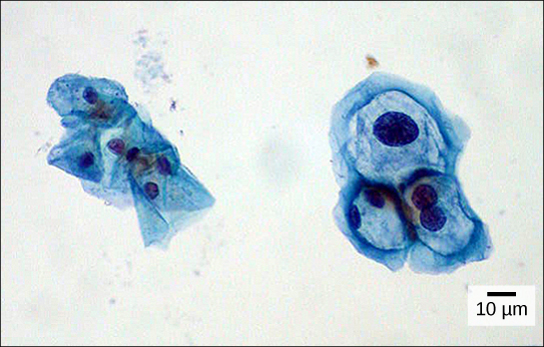| << Chapter < Page | Chapter >> Page > |
The microscopes we use today are far more complex than those used in the 1600s by Antony van Leeuwenhoek, a Dutch shopkeeper who had great skill in crafting lenses. Despite the limitations of his now-ancient lenses, van Leeuwenhoek observed the movements of protista (a type of single-celled organism) and sperm, which he collectively termed “animalcules.”
In a 1665 publication called Micrographia , experimental scientist Robert Hooke coined the term “cell” for the box-like structures he observed when viewing cork tissue through a lens. In the 1670s, van Leeuwenhoek discovered bacteria and protozoa. Later advances in lenses, microscope construction, and staining techniques enabled other scientists to see some components inside cells.
By the late 1830s, botanist Matthias Schleiden and zoologist Theodor Schwann were studying tissues and proposed the unified cell theory , which states that all living things are composed of one or more cells, the cell is the basic unit of life, and new cells arise from existing cells. Rudolf Virchow later made important contributions to this theory.
Cytotechnologists (cyto- = “cell”) are professionals who study cells via microscopic examinations and other laboratory tests. They are trained to determine which cellular changes are within normal limits and which are abnormal. Their focus is not limited to cervical cells; they study cellular specimens that come from all organs. When they notice abnormalities, they consult a pathologist, who is a medical doctor who can make a clinical diagnosis.
Cytotechnologists play a vital role in saving people’s lives. When abnormalities are discovered early, a patient’s treatment can begin sooner, which usually increases the chances of a successful outcome.

All of life can be grouped into three Domains Archaea, Bacteria and Eukarya ( [link] ). Even though Archaea and Bacteria are prokaryotes, there are enough differences between Archaea and Bacteria that warrant them being in different Domains. Within the Domain Eukarya, there are at least four Kingdoms Protists (multiple kingdoms), Fungi, Plantae and Animalia. Figure 4 shows the current phylogentic tree of all these various groups that we will be exploring.

In this textbook, we explore cells and the chemistry of life in the reverse order of many traditional textbooks. First, we explore the diversity of life at the cellular level and then we investigate the chemistry of life or Biochemistry. The reason why we take this approach is based on the fact that many students have had some exposure to cells and this exposure allows them to connect with the material. In addition, we feel a macro to micro approach to investigating this material allows the learner the ability to better connect how the biochemistry relates to the functioning cell.

Notification Switch
Would you like to follow the 'Principles of biology' conversation and receive update notifications?